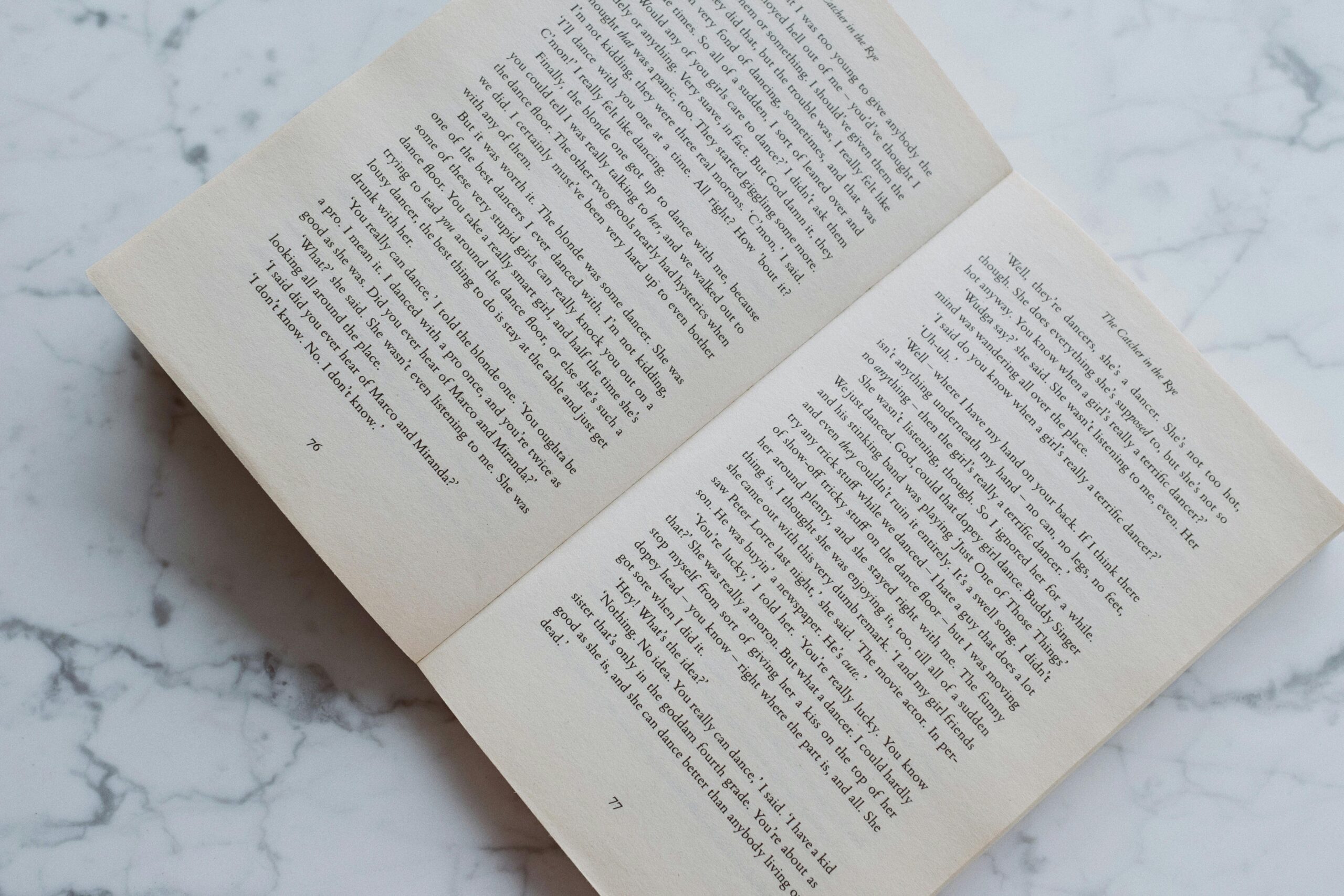Are you struggling to write compelling book reviews that captivate readers and keep them coming back for more? Look no further! In this article, we’ll dive into some of the best book review examples that will inspire and captivate readers, helping you craft engaging and memorable reviews. Whether you’re a blogger, student, or just a passionate reader, knowing how to write a powerful book review can transform your writing and attract more attention to the books you love. But how exactly do you create reviews that stand out in the crowded world of book blogging? Keep reading to discover proven book review strategies, real-life examples, and tips that make your reviews shine!
Writing a book review isn’t just about summarizing the plot—it’s about connecting with your audience and sparking their curiosity. Are you ready to learn the secrets behind effective book review writing techniques? From the perfect opening sentence to highlighting key themes and sharing your personal takeaways, our example reviews cover it all. We’ll show you how to use SEO-friendly keywords for book reviews to increase your blog’s visibility and engage readers searching for honest and insightful opinions. Plus, you’ll find out how to balance critique and praise to create authentic, trustworthy reviews that readers can’t resist.
In the sections ahead, you’ll find detailed book review examples with 2-3 paragraphs that demonstrate how to keep your thoughts concise yet impactful. Each example is crafted to help you understand the flow, tone, and structure needed for a professional review. So, whether you’re reviewing a thrilling mystery novel or an inspiring self-help book, these examples will guide you toward writing reviews that truly resonate with your audience. Ready to become a master of captivating book reviews? Let’s get started!
7 Captivating Book Review Examples in English to Spark Your Creative Writing
Books have always been gateways to new worlds, ideas, and emotions. Writing a book review is one way to share your experience with others, but many struggle to find the right words or structure. If you ever wonder how to craft a review that not just informs but also entertains, you’ve landed in the right place. Below, we explore 7 captivating book review examples in English that will spark your creative writing. These examples are not just templates but sources of inspiration that show how diverse and engaging book reviews can be. Whether you are a student, blogger, or just a passionate reader, these samples will help you captivate your audience and improve your writing craft.
Why Book Reviews Matter in Today’s Literary World
Book reviews have been around for centuries, dating back to the early newspapers in the 17th century. They serve several purposes:
- Guide readers to choose books wisely
- Provide feedback to authors and publishers
- Contribute to literary criticism and discussion
- Help build communities around shared interests
In the fast-paced digital age, book reviews appear everywhere: social media, blogs, news sites, and even podcasts. Writing a strong review is a skill that combines analysis, storytelling, and personal opinion. But how to do it in a way that stands out and feels genuine?
What Makes a Book Review Captivating?
Not all book reviews are created equal. Some are dry summaries, others overly critical or vague. A captivating book review should have:
- A clear structure: introduction, summary, analysis, and conclusion
- Personal voice and emotional response
- Specific examples from the book
- Balanced critique (highlighting strengths and weaknesses)
- Engaging language that invites readers to keep reading
Now, let’s dive into 7 book review examples that does all these things and more.
1. The Enthusiastic Recommendation
This review type focus on excitement and strong endorsement. For example:
“When I first opened ‘The Midnight Library’ by Matt Haig, I couldn’t put it down. The concept of exploring alternate lives is not new, but Haig breathe freshness into it with humor and heartfelt moments. The characters felt real and flawed, which made the emotional scenes hit harder. If you are looking for a book that makes you reflect on life’s choices, this is a must-read.”
This example uses simple language but conveys genuine enthusiasm, making readers curious to check the book themselves.
2. The Critical Yet Fair Review
This style balances praise with constructive criticism.
“‘The Silent Patient’ by Alex Michaelides has a gripping premise and a twist that surprises, although some parts drag and could have been trimmed. The protagonist’s psychology is well-developed, but the secondary characters sometimes feel one-dimensional. Overall, it is a thrilling read but not perfect.”
Here, the reviewer doesn’t shy away from pointing flaws but praises enough to keep the tone respectful.
3. The Analytical Deep Dive
For those who enjoy dissecting plot and themes:
“In ‘1984’ by George Orwell, the dystopian world is more relevant than ever. Orwell’s portrayal of surveillance and loss of individuality offers chilling warnings. The narrative structure, combining Winston’s rebellion with party propaganda, creates tension that keeps readers hooked. Though the prose may feel dated to some, the ideas resonate deeply.”
This review provides historical context and thematic analysis, making it informative and thought-provoking.
4. The Personal Connection Story
Sometimes, sharing how a book affected you personally can be powerful.
“‘To Kill a Mockingbird’ by Harper Lee reminds me of my childhood in a small town. The innocence of Scout and the courage of Atticus Finch taught me about justice and empathy. Reading it again as an adult, I appreciated the layers of social commentary that I missed before.”
This style brings authenticity and emotional depth, inviting readers to connect emotionally.
5. The Comparative Review
Comparing a book to others helps situate it in a broader literary landscape.
“If you enjoyed ‘The Hunger Games’ by Suzanne Collins, you might like ‘Red Queen’ by Victoria Aveyard. Both feature strong female protagonists in dystopian settings, but ‘Red Queen’ adds political intrigue and fantasy elements that make it unique. However, some readers find the pacing uneven compared to Collins’ tighter narrative.”
Readers get a quick sense of similarities and differences, helping them decide if the book fits their taste.
6. The Brief But Impactful Review
Not everyone has time to read long critiques. Short, punchy reviews can be just as effective.
- Title: ‘The Alchemist’ by Paulo Coelho
- Review: A mystical journey about following your dreams. Simple yet profound. This book stays with you long after the last page.
This example shows how economy of words can still deliver a meaningful impression.
7. The Humorous Take
Injecting humor can engage readers who might find typical reviews dull.
How to Write Engaging Book Reviews: Proven Examples That Inspire Readers
Writing engaging book reviews is something many people struggle with, especially when they want to inspire others to pick up the same book. It isn’t just about summarizing a story or saying whether you liked it or not. No, writing a review that captivates readers involve much more than that. If you want to learn how to write engaging book reviews, you’re in the right place. We’ll explore proven examples that inspire readers, show book review examples that will captivate, and even provide tips on how to avoid common mistakes. Let’s dive into the art and craft of book reviewing, the way that feels real and relatable.
Why Write Book Reviews? A Brief Look Back
Since the invention of the printing press in the 15th century, book reviews have played an important role in literature culture. They helps readers decide what to read next, and give feedback to authors and publishers. In the 18th and 19th centuries, book reviews appeared in newspapers and magazines, becoming a crucial part of literary criticism. Today, with the rise of online platforms like Goodreads and Amazon, anyone can write a book review and share their opinion with thousands, maybe millions, of readers.
Book reviews are not just opinions. They are a form of communication, a way to connect people through stories, ideas, and emotions. When you write a review that engages others, you are doing more than just offering your thoughts. You are helping build a community of readers who trust you.
What Make a Book Review Engaging?
An engaging book review usually has several key elements. Here are some points you want to consider:
- Personal Voice: Readers want to hear your genuine reaction, not something robotic or overly polished.
- Clear Opinion: Don’t be vague. Say if you liked or disliked the book, but explain why.
- Specific Examples: Use parts of the book to support your views, like a favorite character or a surprising plot twist.
- Balanced Critique: Even if you love the book, mention parts that could be improved or didn’t work for you.
- Brevity with Depth: Don’t write a novel, but don’t be too brief either. Find a middle ground that gives enough insight.
- Call to Action: Encourage readers to try the book or share their own thoughts.
Proven Book Review Examples That Inspire Readers
To better understand how to write reviews that really connect, let’s look at some examples. Imagine you just finished a thrilling mystery novel called The Midnight Secret.
Example 1:
“I was hooked from the first page of The Midnight Secret. The author, Jane Doe, crafts a twisty plot that kept me guessing till the very end. What I loved most was the main character, Sarah, who felt like a real person – flawed, brave and funny. Although some scenes dragged a bit, overall, this book made me want to stay up late just to finish it. If you enjoy mysteries with strong women leads, give this one a try.”
Example 2:
“The Midnight Secret has potential but didn’t fully deliver for me. The mystery was interesting but sometimes, the pacing felt uneven and a few characters were underdeveloped. Still, the vivid descriptions of New York’s dark alleys created a spooky atmosphere that pulled me in. Fans of urban thrillers might appreciate this book more than others.”
These examples show different tones and opinions but both give clear reasons and specific references to the book. They also use personal feelings mixed with facts about the story or writing style. This approach makes the reviews relatable and trustworthy.
Practical Tips to Write Your Own Review
If you want to write reviews that really engage people, here’s a simple outline you could follow:
- Start With a Hook: Begin with a sentence that grabs attention, like a surprising fact or your immediate reaction.
- Brief Summary: Give a very short overview of the plot or subject without spoiling the story.
- Your Opinion: Share what you liked or disliked, backed by examples.
- Highlight Characters or Themes: Talk about one or two elements that stood out.
- Compare or Contextualize: If possible, compare it with similar books or authors.
- End With a Recommendation: Let readers know who might enjoy the book or why it’s worth reading.
Comparison Table: Good vs. Bad Book Reviews
Here’s a quick table to help you see the difference between effective and ineffective book reviews.
| Aspect | Good Book Review | Bad Book Review |
|---|---|---|
| Clarity | Clear opinion and explanation | Vague or confusing |
| Specifics | Uses examples from the book | General statements without details |
| Tone | Personal and relatable | Robotic or overly formal |
| Length | Balanced, informative | Too short or excessively long |
| Engagement |
Top 5 Powerful Book Review Samples for English Literature Enthusiasts
New York’s literary scene keeps thriving with readers and writers alike looking for fresh ways to dive deeper into English literature. One of the best ways to connect with the world of books is through book reviews. But not just any review — powerful, captivating book reviews that inspire readers and help them understand the essence of a story or a piece of writing. If you are English literature enthusiast or just a casual reader wanting to sharpen your reviewing skills, this article shares Top 5 Powerful Book Review Samples that will really spark your creativity and guide you through writing engaging book reviews. Alongside, you will find examples that show how different styles and approaches can be used to grab readers’ attention.
Why Book Reviews Matter in English Literature
Book reviews have been part of literary culture for centuries. Back in the 18th century, publications like The Spectator and The Edinburgh Review helped readers decide which books to invest time in. Reviews do more than summarizing a plot; they offer critique, context, and personal reflection that enrich the reading experience. For English literature enthusiasts, reviews can open new interpretations or highlight themes that might otherwise be missed. They also serve as bridges between the author and the audience, making literature accessible and relatable.
What Makes a Book Review Powerful?
Before jumping into examples, it’s important to know what elements make a book review stand out:
- Clear Thesis or Opinion – The review should have a central argument or feeling about the book.
- Detailed Examples – Instead of vague comments, use specific scenes, quotes, or character analysis.
- Balanced Critique – A good review points out strengths and weaknesses.
- Personal Engagement – Sharing how the book affected the reviewer adds authenticity.
- Reader-Friendly Language – Avoid jargon, be approachable but insightful.
Top 5 Powerful Book Review Samples for English Literature Enthusiasts
Here we list book review examples that illustrate diverse styles, tones, and focus points. Each can inspire your own writing method.
- The Classic Analytical Review
This sample focuses on analyzing themes, symbols, and author’s style in a classic novel.
Example:
“In Jane Austen’s Pride and Prejudice, the sharp wit and social critique come alive through Elizabeth Bennet’s eyes. Austen’s use of irony not only entertains but also exposes the rigid class structure of 19th-century England. The novel’s enduring appeal lies in its complex characters and subtle commentary on gender roles, which still resonate today.”
Why it works: It combines thematic insight with historical context and maintains a clear opinion about the novel’s relevance.
- The Personal Reflection Review
This type brings emotion and subjective response to the forefront.
Example:
“Reading The Great Gatsby felt like stepping into a dream of opulence and despair. Fitzgerald’s prose painted a world both dazzling and hollow. I found myself pitying Gatsby more with each chapter, his relentless hope mirrored in my own struggles with unfulfilled desires. This book isn’t just a story; it’s a haunting reminder of the American Dream’s fragility.”
Why it works: Personal engagement makes the review relatable, inviting readers to connect emotionally.
- The Comparative Review
Here, the reviewer compares two or more works to highlight differences or similarities.
Example:
“While both Wuthering Heights and Jane Eyre explore themes of love and revenge, Brontë sisters approach these differently. Wuthering Heights is raw and turbulent, with its gothic atmosphere dominating the narrative. Jane Eyre, however, is more measured and introspective, focusing on morality and self-respect. Readers might prefer one over the other depending on their taste for emotional intensity versus moral clarity.”
Why it works: It helps readers decide which book might suit their preferences by offering a clear comparison.
- The Plot-Focused Review
This one is useful for readers who want to know about the story without too much analysis.
Example:
“In George Orwell’s 1984, Winston Smith lives under constant surveillance in a dystopian society. As he begins to rebel against the Party, the tension rises quickly, leading to a gripping climax. The plot moves fast, with Orwell creating a chilling vision of authoritarianism that feels eerily relevant even decades after it was written.”
Why it works: It gives a straightforward overview of the plot while hinting at the book’s deeper significance.
- The Critical Review
This style isn’t afraid to point out flaws and provoke thought.
Example:
“While Toni Morrison’s Beloved is praised for its poetic language and historical importance, at times the narrative becomes overly dense, making it difficult to follow. Some character motivations felt underdeveloped, which detracted from the emotional impact. However, the novel’s core message about memory and trauma remains powerful and necessary.”
Why it works: Honest critique builds credibility and encourages readers to consider the book thoughtfully.
Book Review Examples That Will Inspire and Captivate Readers
Using these examples
Secrets Behind Writing Irresistible Book Reviews: Real Examples You Can Follow
Writing a book review might seem easy at first, but it actually requires a bit of skill and understanding to make it truly irresistible. Many people just summarize a story or say if they liked it or not, but that’s not enough if you want to captivate your readers and inspire them. The secrets behind writing book reviews that stand out are both practical and creative. And yes, you can find real examples to follow that will help you improve your own writing. In this article, we explores those secrets and shows examples that you can try yourself.
Why Writing Book Reviews Matter
Book reviews are more than just opinions. They help readers decide whether a book is worth their time, and they give authors valuable feedback. Historically, book reviews have been part of literary culture for centuries, starting back from the 18th century when newspapers and magazines began dedicating pages to critique new novels. Today, with the rise of online platforms like Goodreads and Amazon, book reviews become even more important because they influence sales and visibility.
Readers don’t just want to know what happens in the book; they want to know what they will feel or learn from it. A good review must balance facts, emotions, and personal insight, which is not easy to do without practice.
Key Elements of an Irresistible Book Review
When you write a book review, there are few key points you should consider to make it stand out:
- Hook your reader immediately. Start with a statement or question that grabs attention.
- Brief summary. Summarize the plot or main points but keep it short. Avoid spoilers.
- Personal reaction. Share how the book made you feel or what you thought about the characters or themes.
- Critical analysis. Point out what worked and what didn’t, giving examples.
- Recommendation. Clearly say who would enjoy the book and why.
- Unique voice. Use your own style; don’t sound like a robot or a textbook.
Real Book Review Examples You Can Follow
Here are some types of book reviews that show different approaches you can take. Notice the variety in tone, style, and focus:
- The Enthusiastic Fan Review
“I couldn’t put down ‘The Night Circus’ by Erin Morgenstern! The magical atmosphere and vivid descriptions made me feel like I was walking inside a dream. The characters were quirky but relatable, and the plot twists kept surprising me until the very end. If you love fantasy mixed with romance and mystery, this book is a must-read!”
- Starts with excitement
- Uses strong emotional words
- Gives a clear recommendation
- The Balanced Critique
“While ‘The Goldfinch’ by Donna Tartt has beautiful prose and complex characters, I found the pacing to be slow at times, especially in the middle chapters. The story explores themes of loss and identity deeply, which I appreciated, but it might not appeal to readers looking for fast action. Overall, a rewarding read if you enjoy literary fiction.”
- Acknowledges positives and negatives
- Gives specific examples
- Suggests target audience
- The Analytical Review
“In ‘Sapiens’ by Yuval Noah Harari, the author presents a sweeping history of humankind with engaging storytelling and deep insights. However, some arguments appeared oversimplified or speculative, which might mislead readers unfamiliar with the subject. Despite that, the book is a fascinating introduction to anthropology and history.”
- Focus on content quality and accuracy
- Provides critical evaluation
- Useful for nonfiction readers
How To Structure Your Review Effectively
Here’s a simple outline to follow that make your review clear and easy to read:
- Opening Hook: Capture attention with a question, bold statement, or interesting fact.
- Summary: Briefly explain what the book is about without giving away spoilers.
- Your Opinion: Describe what you liked or disliked, and why.
- Evidence: Give examples from the book to support your opinion.
- Recommendation: Suggest who might enjoy it and why.
- Closing: End with a memorable thought or call to action.
Comparing Good and Bad Book Reviews
| Aspect | Good Review | Bad Review |
|---|---|---|
| Clarity | Clear and understandable | Vague and confusing |
| Detail | Specific examples included | Only general statements |
| Tone | Engaging and honest | Boring or overly negative |
| Usefulness | Helps readers make decision | Doesn’t provide helpful info |
| Voice | Personal and unique | Robotic or repetitive |
Tips To Make Your Book Review More Captivating
- Use descriptive language to paints pictures.
- Don’t be afraid to show your personality, even if it means making some grammar mistakes.
- Include quotes from
Step-by-Step Guide with Book Review Examples in English to Boost Your Blog Traffic
Step-by-Step Guide with Book Review Examples in English to Boost Your Blog Traffic
If you want to increase your blog traffic, one of the best ways is to write engaging book reviews that catch the attention of readers. Book reviews are powerful because they not only share your opinion but also help readers decide what to read next. However, many bloggers struggle with how to write a review that captivates readers and encourages them to come back for more. This article will guide you through a simple, step-by-step process to create compelling book reviews with examples that will inspire you. Plus, you will learn how book reviews can improve your blog’s visibility in search engines and attract more visitors from New York and beyond.
Why Book Reviews Matter for Your Blog Traffic
Book reviews do more than just talk about a book’s content. They create trust, build communities, and provide valuable information to potential readers. When you write a good review, it can:
- Increase your blog’s search engine ranking by targeting specific keywords related to the book.
- Encourage social sharing, which brings new visitors from various platforms.
- Establish your authority in a niche, especially if you focus on specific genres or authors.
- Help readers make purchase decisions, which sometimes leads to affiliate sales if you include links.
- Offer content variety, keeping your blog fresh and interesting.
Historically, book reviews started in newspapers and literary magazines, but with the rise of blogging, they became a popular way for everyday readers to share their thoughts. The internet allowed book lovers from New York to connect with others worldwide, turning book blogging into a community-driven activity.
Step 1: Choose the Right Book to Review
Not all books will bring traffic to your blog equally. You should consider:
- Books that are trending or newly released.
- Titles in your blog’s niche or genre specialty.
- Books with a dedicated fan base or author following.
- Books that you genuinely enjoy or have strong opinions about.
For example, if your blog focuses on science fiction, reviewing the latest release by a well-known author like Isaac Asimov or a rising star in the genre can attract readers searching for new reads.
Step 2: Read and Take Notes
Don’t just skim the book. Read it carefully and note down key points like:
- Main plot and character descriptions.
- Themes and messages the author wants to convey.
- Your emotional reaction and personal thoughts.
- Any quotes or passages that stood out.
Taking notes helps you structure your review later, and it ensures you don’t forget important details.
Step 3: Structure Your Book Review Clearly
A well-organized review is easier to read and more engaging. A common structure includes:
- Introduction – Briefly introduce the book, author, and what attracted you to it.
- Summary – Describe the plot or main idea without spoilers.
- Analysis – Discuss what you liked or disliked, themes, and writing style.
- Examples – Include specific moments or quotes that support your opinion.
- Conclusion – Give your final verdict and recommend who should read the book.
Book Review Example 1 – Fiction
Introduction:
Recently, I picked up The Midnight Library by Matt Haig, a novel that explores the endless possibilities of life choices. The story follows Nora Seed, who discovers a library between life and death where she can live alternate versions of her life.
Summary:
The plot revolves around Nora’s journey through different lives, trying to find one that feels fulfilling. Each chapter presents a new reality based on a decision she made or didn’t make.
Analysis:
Haig’s writing style is simple yet profound, making complex philosophical ideas accessible. I loved how the book made me think about regrets and happiness, though some parts felt repetitive. The character development is strong, especially Nora’s growth from despair to hope.
Examples:
One quote that stuck with me was, “Between life and death there is a library, and within that library, the shelves go on forever.” It perfectly captures the novel’s theme of choices and chances.
Conclusion:
If you enjoy thought-provoking fiction that blends fantasy with reality, The Midnight Library is worth your time. It is ideal for readers who like stories about second chances and self-discovery.
Step 4: Use SEO Best Practices in Your Review
To boost your blog traffic, your book review should be optimized for search engines. Here are some tips:
- Include the book title and author’s name in the title and first paragraph.
- Use relevant keywords naturally, like “book review examples,” “fiction book review,” or “best book reviews.”
- Add meta descriptions summarizing your review.
- Use headings and bullet points to make the content scannable.
- Link to related articles or book purchase pages (if affiliate marketing is part of your strategy).
Book Review Example 2 – Non-Fiction
Conclusion
In conclusion, understanding the structure and elements of effective book reviews is essential for both readers and writers looking to engage thoughtfully with literature. Throughout this article, we explored various book review examples that highlight the importance of a clear summary, critical analysis, and personal reflection. Whether you are reviewing fiction or non-fiction, maintaining a balanced perspective and supporting your opinions with specific examples can greatly enhance the credibility of your review. Additionally, considering your target audience helps tailor the tone and depth of your critique, making your review more impactful. By applying these key points, you can craft insightful and compelling book reviews that not only inform but also inspire others to explore new reads. So, the next time you finish a book, take a moment to share your thoughts—your review might just be the guide someone else needs to discover their next favorite read.













